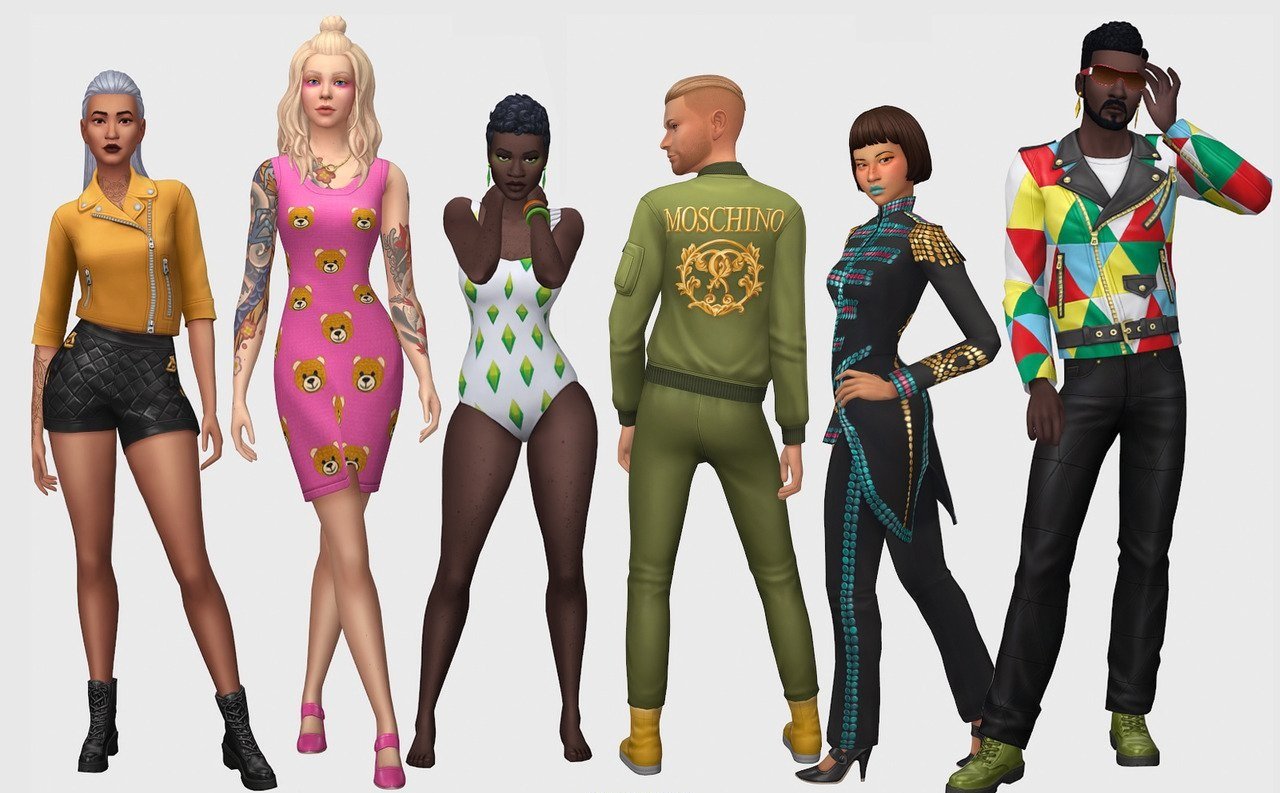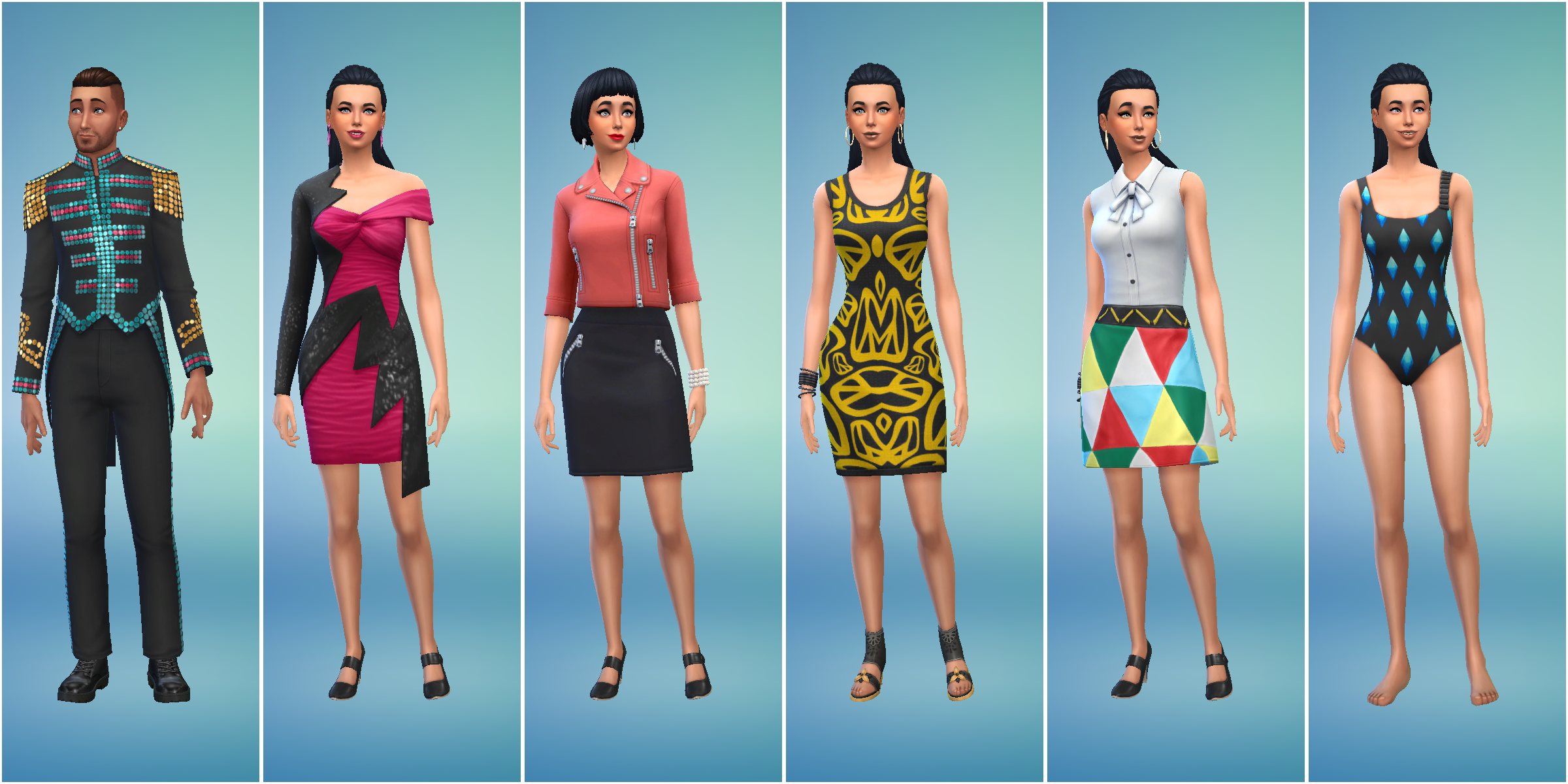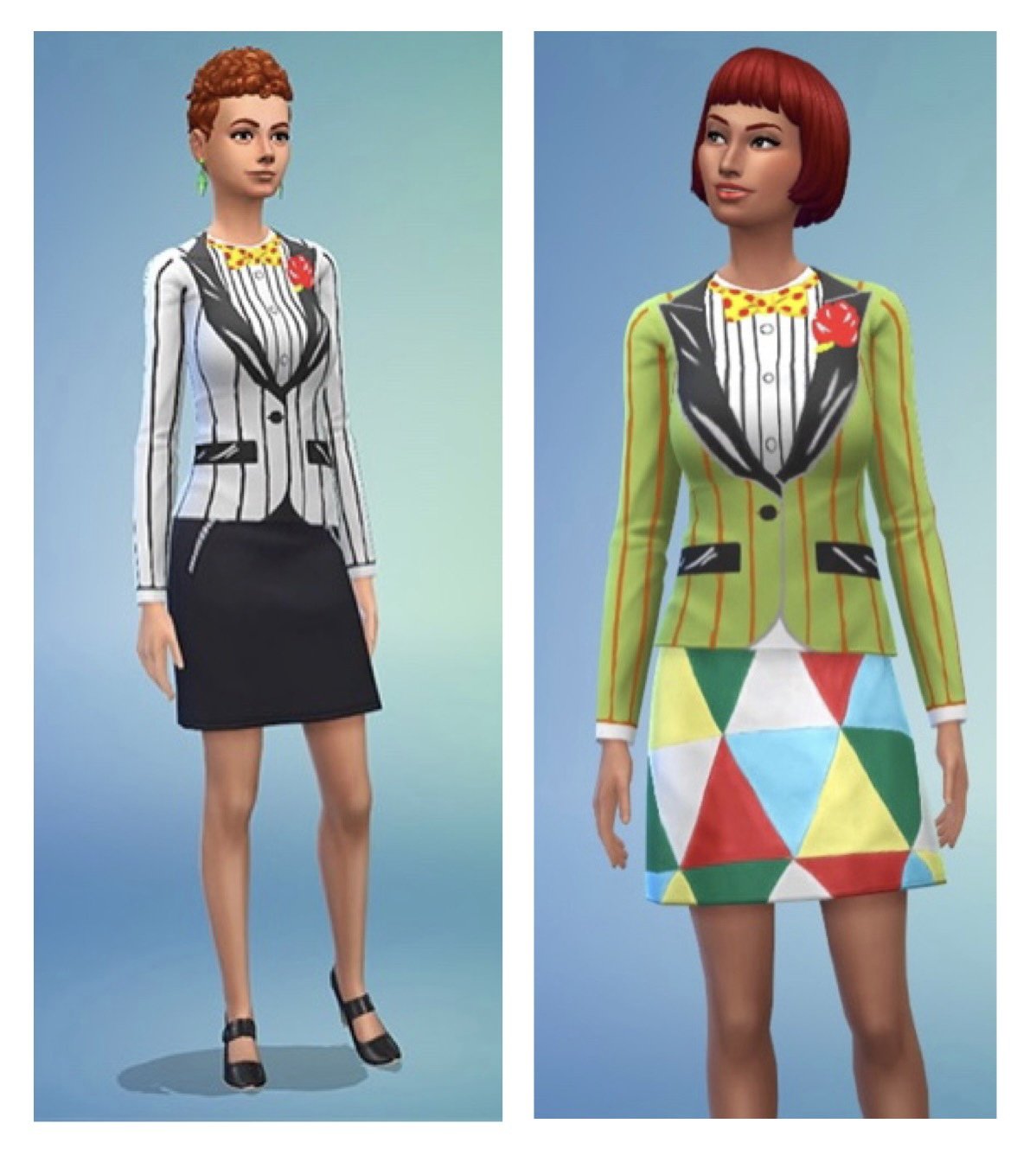Balenciaga, Moschino, Prada, and More Commit Crimes Against Fashion in the Digital Space
Luxury Brands have the most to gain from digital fashion; yet utilize it the most poorly.
Digital fashion is clothing designed for a 3D virtual space; often modeled by real human beings as well as avatars. It allows designers to create uninhibited by the laws of physics.
With so much potential, and the most resources readily at their disposal, these fashion houses fell like Icarus; hard and far.
It's not just offensive. It’s criminal.
Jeremy Scott, creative director of Moschino, 9 years running, is known for playful collections that don't take themselves too seriously.
The Charge: Stomach Churning Animation, in the first degree.
In 2019, Scott unleashed upon innocent internet bystanders his digital capsule collection for the Sims 4. This act of fashion terrorism includes a swimsuit dotted with the iconic Sims plumbob, marching band uniforms, and gaudy prints.
If I had to describe this collection in one word, it would be ugly. But yet it nags on me, Jeremy Scott has never been one to shy away from making something ugly if it's to make a point. To illustrate, please see the historic Fall 2014 McDonald’s collection.
Although garish, it mimics the traditional Chanel tweed set. It meshes the most elegant and high class elements of Chanel with the most accessible and campy aesthetics of McDonald’s; calling out high fashion as being just as commercialized as fast food.
But what point about the world was he making with this?
Scott clearly leaned into the kooky and unsightly aesthetic the Sims already has a reputation for. Even if it’s in a bad way, at least he made something eye-catching.
Next in the lineup: Prada and Thom Browne.
The Charge: Sloth
Prada (left), Thom Browne (right)
Thom Browne and Prada absolutely phoned it in on their collaborations with the Metaverse avatar store. (And yes the models are animated versions of Mark Zuckerberg and his wife.) These leading designers of the fashion world chose a plain white tank top and a chaste gray skirt suit to dress the avatars of the future. If the future’s color palette is as dreary as these outfits, kill me now.
Upon announcement, I didn't expect much from a brand like Prada that seems to have thrown in the towel way back in the 90s and transferred all the fun to Miu Miu. Their look is reminiscent of an irl look they dressed Charli D'amelio in for the MTV Movie & TV Awards. So this look is actually incredibly on brand for Prada. It’s just their brand is… horrid.
Thom Browne, on the other hand, was a special kind of disappointment. This designer created surreal looks, just this past fall season, inspired by interpretations of children’s drawings that play on silhouette and shape and size.
He’s evidently found playful ways to interpret the grey suit; so why would he phone it in so extremely on a project where the sky was the limit? Well, when asked, Thom Browne explained “It took me two seconds, no one second, to know what it needed to be.”
From the devil's mouth: It took one second of consideration to realize he could slap anything over that skin and people would purchase it for 8.99 a pop and call it “the democratization of fashion.” I call it catering to the lowest common denominator.
Marc Jacobs and Valentino’s contribution to digital fashion, is an improvement from the aforementioned designers, in that these looks, designed for Animal Crossing’s New Horizons, don't make me want to call upon crows to gauge my eyes out. However, they still feel like marketing schemes more than a contribution to the art of digital fashion; and that is going to land them with a Misdemeanor Sloth Charge.
I think Jacobs and Valentino see digital fashion as a means for creating hype for the brands they've already created in the real world rather than a new frontier for fashion to move into. Ultimately it's lazy.
I would love to see a luxury brand work in augmented reality which is digital fashion meshed with real models and real environments. But that is a lot harder to do, and I think they purposefully choose these entirely digital spaces because it is easier to pump out a simple product.
Calling Balenciaga to the stand!
The Charge: Profit over everything.
Fortnite is a repeat fashion offender in the digital space. Balenciaga is the most offensive Fortnite collaboration (so far). A plain white hoodie that says Fortnite on it, in Fortnite?…
Balenciaga plans to create an ingame storefront where players can buy real world Balenciaga products. Ultimately they are a brand and their goal is to sell clothes. I can't really blame them for wanting their brand to be financially viable. I just think the artistry could play a larger role. I would have no problem with this if it felt like they did more than code the first designs that came to their head.
It is a larger risk to create something extravagant that a few people may deeply connect with, than to dull and diminish a design until it can appeal to the largest number of customers.
And the sad thing is; I'm sure this business model works! I just wish they would do it with more thought and consideration for their influence over how we interact with fashion.
This kind of publicity perpetuates the modern crisis of valuing the brand name more than one’s own self expression. Fashion should not just be something that is owned or bought for its status. It should be loved. Fashion is best when it functions as a reflection of you. As self expression is devolving into plain t-shirts with luxury brand logos on it, I ask: Is that all you have to say about yourself?
Digital fashion is an opportunity for pure unfettered expression. Daniella Loftus is one of my favorite contributors to the virtual space. Her instagram @thisoutfitdoesnotexist serves almost as a digital fashion activism account. She even coined the phrase “phygitial” relating to the 3d designs made to be worn by real people in fake spaces like the metaverse.
Her gowns are chromatic and loud and large and pushing what we thought fashion could be. They balloon out in voluminous shapes that if constructed in the real world would require extensive under-structures, petticoats, and bustles.
Seeing what is possible makes haute couture’s contribution all the more depressing. These are people (often individuals) with far less doing so much more.
Digital fashion also dismantles many of the obstacles in materializing one’s designs. Typically, it requires a massive amount of capital to source materials, labor, and studio rent. With the rise of digital fashion, anyone can become a designer. The more accessible fashion becomes, the more poc, female, and lgbtq designers will be able to impact the fashion community and overall culture.
In a way, maybe this is the great equalizer in fashion. Maybe the rigid and elitist structure of the fashion world cannot, by definition, make room for digital fashion because it chips away at the exclusivity that gives them so much of their power. Maybe a small part of me hopes they continue to flounder in the digital space and usher in a new more democratized and creative fashion landscape.
One can dream.

























